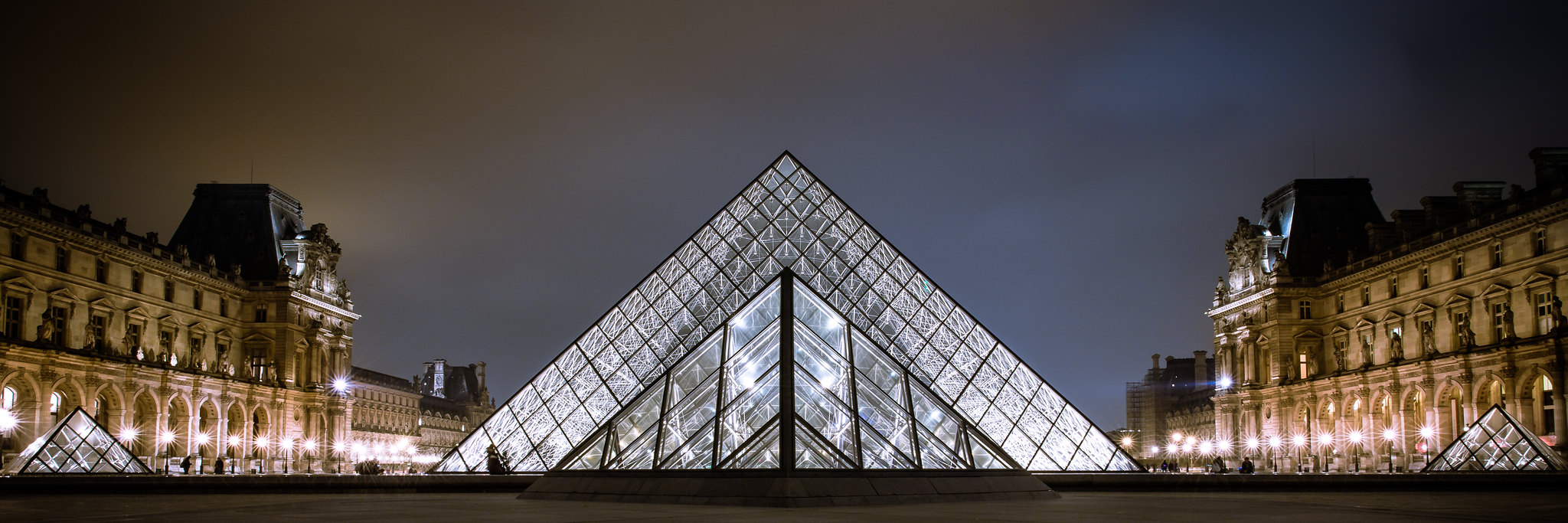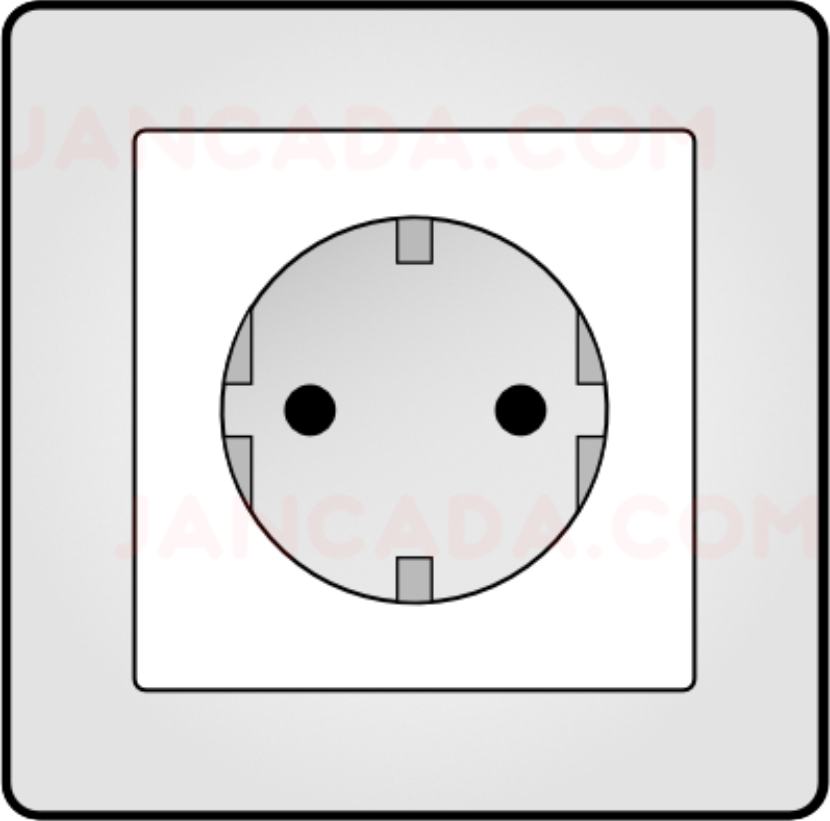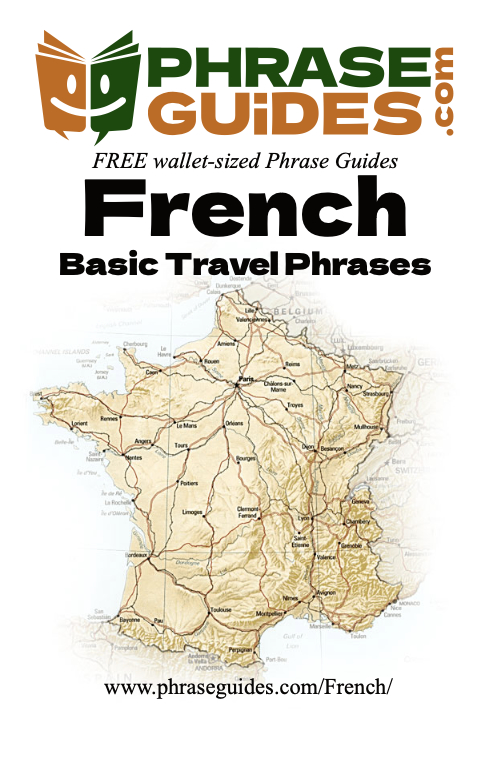France Travel Tips
I will be starting with info for Chamonix and Paris. I have no information beyond those two areas.
Journal Français is "your French connection in the US". It looks promising, but I haven't seen an issue yet to judge for myself.
Mountain Biking Trails
Utagawa VTT offers hundreds of MTB trails in France, Europe and other places for free. Most of the tracks are in the French Alps for the moment. The trails are described with GPS track, profile, maps, pictures. There is also a forum allowing members to discuss about new spots. Members will soon be able to post their own tracks.
The site is in French, but using Google translator allows non-French speakers to convert it in to their language.

Finally, for further afield, but all within an hour(ish):
France
Paris
- Columbus World City guide to Avignon
- Columbus World City guide to Cannes
- Columbus World City guide to Lyon
- Columbus World City guide to Paris
- Columbus World City guide to Strasbourg
Things to see in France
- Mont Saint-Michel Abbey
- Arc de Triomphe
- Arles Roman Amphitheatre
- Sacré Coeur Basilica, Montmartre
- Chartres Cathedral
- Notre Dame Cathedral
- Chenonceau Castle
- Palace of Versailles
- Père Lachaise Cemetery
- The Walled Town of Carcassonne
- Cité des Sciences et de l'Industrie
- Disneyland Paris
- Cave of Lascaux
- Claude Monet's House and Water Garden
- Orsay Museum
- Louvre
- Popes' Palace
- Parc Astérix
- Futuroscope Park
- Regional Nature Park of the Volcanoes of Auvergne
- D-Day Beaches
- Gard Aqueduct
- St Benezet Bridge
- Rocamadour
- Bayeux Tapestry
- Eiffel Tower

Paris
map of Paris (not done)
French phrase guide
Paris Subway map (in French)
I haven't prepared anything for Paris yet, but eventually will. I really like the area near Bastille. Check out Fredlet's "Things to do in Paris when you are not dead."
Bike tours are increasingly popular, and great ways to see foreign cities, learn your way around, and get a little bit of histlry. Mikes Bike Tours Paris is now called "Fat Tire Bike Tour Paris".
I read (OK, I don't read French, I looked at the pictures) an article about a motorcycle bar in Paris with an old BMW boxer motor on the bar with two taps coming out of each cylinder! I will definitely hit that the next time that I'm there.
328 rue de Belleville, 75020 Paris
tel.: 01 43 64 66 84
I also want to check out this pocket bike link that was in the magazine:
www.pocketissimo.com

I went to Paris and discovered a lot of stuff that was new to me. Here is what greeted me at the Paris East train station: Not the eiffel tower. Check out how that marble floor just shines. They keep that place really clean!
Janet went to the Lizard Lounge when she was last in Paris, and loved it. She said that it's a decent bar, but the cool part is the downstairs alcoves.
The Dans le Noir restaurant in Paris is build around a room in complete darkness. It's blind staff serves sighted and blind people, creating a totally unique experience.
51 rue Quincampoix75004 Paris
tél: 01 42 77 98 04
fax : 01 42 77 98 07
www.danslenoir.com
Chamonix
I was in Chamonix for the first time in August 2001, after 15 years of wanting to go. Even though it was a very touristy month, I was still impressed.
It's a beautiful town, a bit uglier for all the tourists and tourist shops, but still has some quaintness to it. The hiking is fantastic. You can buy guide books at all of the book stores.
To do anything more serious, there is an association of mountain guides that offers tours and instruction in almost anything alpine. Glacier walks, climbs and much more.
The shortest trips are full day, and they have multi-day tours that go over Mont Blanc into Italy.
There were so many Brits there, I couldn't believe it. I met mostly Brits, some Swedish, and hardly any French.
after 15 years of wanting to go. Even though it was a very touristy month, I was still impressed.
It's a beautiful town, a bit uglier for all the tourists and tourist shops, but still has some quaintness to it. The hiking is fantastic. You can buy guide books at all of the book stores.
To do anything more serious, there is an association of mountain guides that offers tours and instruction in almost anything alpine. Glacier walks, climbs and much more.
The shortest trips are full day, and they have multi-day tours that go over Mont Blanc into Italy.
There were so many Brits there, I couldn't believe it. I met mostly Brits, some Swedish, and hardly any French.

I have a scanned ![]() map of downtown, but it's not very useable in this form. There is also a
map of downtown, but it's not very useable in this form. There is also a ![]() mountain bike guide to the valley. I took one panorama of downtown and a little of the cloud capped mountains: (you'll need QuickTime viewer, free from Apple)
mountain bike guide to the valley. I took one panorama of downtown and a little of the cloud capped mountains: (you'll need QuickTime viewer, free from Apple)
Chamonix panorama (very large, 1.9 MB)
Right across the street is Munchie 'cuisine et bar'. Swedish owned restaurant with good, creative dishes with a lot of choices for vegetarians.
87 rue des Maulins, Chamonix
I stayed at the Hotel Gustavia. The staff was very friendly and the prices were reasonable.
272, av. Michel Croz, 74400 Chamonix (It's right across from the train station)
tel.: 04 50 53 00 31
fax.: 04 50 55 86 39
www.hotel-gustavia.com
hotel@hotel-gustavia.com
I paid under 900,000 FF (under 150) for two nights with breakfast
Andy
Paris Quick Details
Don't forget
• Pre-book your taxi; it is very hard to hail one in the street.
• Know your arrondissement. Parisians identify streets and areas by these urban divisions.
• A 15% service charge is normally added to restaurant bills.
• Look where you walk (dog poo on the pavements is still a problem).
• Most museums are closed on Mondays or Tuesdays.
• It is usually faster to buy stamps at a tabac than at a post office.
Hotels
DECADENT
STYLISH
EASY ON THE POCKET
Best restaurants
FOR A SPLURGE
BEST FOR A BUSINESS LUNCH
PLAIN ENJOYMENT
Sights to behold
Useful numbers
Airport information
Eurostar (Paris)
Emergencies:
Taxis
Telephone code for Paris
To call abroad from Paris
Restaurants in Paris
At the top end of the market, Paris continues to excel. A restaurant with two or three Michelin stars provides a taste of paradise, and the best chefs are no longer sticking stubbornly to French flavors or techniques. Book up to a month in advance for these gastronomic temples, unless you can secure the help of a well-connected concierge.
Since the late 1990s, New York-style restaurants serving fusion cooking have proliferated, with varying degrees of success. They are popular among business lunchers looking for an alternative to the traditional fare. Style-conscious chains from Alain Ducasse and the Costes brothers have fostered an appetite for super-chic décor and cosmopolitan cooking.
At the lower end of the market, the traditional brasserie can no longer be relied upon for a memorable meal. Choose yours with care and—as a general rule—avoid touristy streets and menus with English translations. Many brasseries continue to honorably defend the integrity of the classic simple dishes like blanquette de veau and confit de canard.
Our favourites
| NAME | ADDRESS | MAP |
| Best for a splurge | ||
| L'Astrance |
4 rue Beethoven | |
| L'Atelier Du Joël Robuchon |
5, rue de Montalembert | |
| Les Ombres |
27 Quai Branly | |
| Pierre Gagnaire |
6 rue Balzac | |
| La Tour D'Argent |
15 quai de la Tournelle | |
| Business lunch | ||
| Café de l'Esplanade |
52 rue Fabert | |
| Macéo |
15 rue des Petits Champs | |
| Spoon, Food & Wine |
14 rue de Marignan | |
| Ze Kitchen Galerie |
4 rue des Grands-Augustins | |
| Les Bouquinistes |
53 Quai des Grands-Augustins | |
| Market |
15 Avenue Matignon | |
| Senderens |
9, place de la Madeleine | |
| Le Voltaire |
27 Quai Voltaire | |
| Working breakfast or brunch | ||
| L'Avenue |
41Avenue Montaigne | |
| Café de Flore |
172 boulevard St-Germain | |
| Les Editeurs |
4, Carrefour de l'Odéon | |
| Le Fouquet’s |
99 avenue des Champs Elysées | |
| Plain enjoyment | ||
| 404 |
69 rue des Gravilliers | |
| L'Ecurie |
2, rue Laplace | |
| Le Stresa |
7 rue Chambiges | |
- 1. Arc de Triomphe de l'Étoile
- 2. Arènes d’Arles (Roman Amphitheatre in Arles)
- 3. Bayeux Tapestry (Tapisserie de Bayeux)
- 4. Cave of Lascaux (Grotte de Lascaux)
- 5. Chartres Cathedral (Cathédrale de Chartres)
- 6. Chenonceau Castle (Château de Chenonceau)
- 7. Cité des Sciences et de l’Industrie
- 8. Claude Monet’s House and Water Garden (Maison de Claude Monet et Le Jardin d’eau)
- 9. D-Day Beaches (Plages du Débarquement de la Bataille de Normandie)
- 10. Disneyland Resort Paris
- 11. Eiffel Tower (Tour Eiffel)
- 12. Louvre (Musée du Louvre)
- 13. Mont Saint-Michel Abbey (Abbaye du Mont Saint-Michel)
- 14. Musée d’Orsay (Orsay Museum)
- 15. Palace of Versailles (Château de Versailles)
- 16. Parc Astérix
- 17. Paris Notre-Dame Cathedral (Cathédrale Notre-Dame de Paris)
- 18. Père Lachaise Cemetery (Cimitière du Père Lachaise)
- 19. Planète Futuroscope
- 20. Popes’ Palace (Palais des Papes)
- 21. Regional Nature Park of the Volcanoes of Auvergne (Parc Naturel Régional des Volcans d'Auvergne)
- 22. Rocamadour
- 23. Sacré Coeur Basilica, Montmartre (Basilique du Sacré Coeur de Montmartre)
- 24. St Benezet Bridge (Pont St-Bénézet)
- 25. The Walled Town of Carcassonne (Cité de Carcassonne)
1. Arc de Triomphe de l'Étoile

Description: Commissioned by Napoleon to commemorate the victorious French Army, the Arc de Triomphe has been a defining symbol of Paris ever since completion in 1836. Engraved on the arch are numerous names of important and not-so-important victories and beneath it lies the Tomb of the Unknown Soldier. Visitors can reach the 50m-tall (164ft) top of the arch for stunning views of Paris, including the Louvre and the Champs-Elysées, or tour the museum inside which charts the history and construction of the arch. The Champs-Elysées is considered to be one of the most elegant boulevards in the world and used to be a showground for Parisian high society. It still retains an air of exclusivity, with luxury boutiques and expensive cafés.
Transportation: Air: Paris Roissy-Charles de Gaulle Airport, Paris Orly Airport. Rail: Train: Paris Gare du Nord (Eurostar) Station. Underground: Charles-de-Gaulle-Étoile. RER: Charles-de-Gaulle-Étoile. Road: Bus: Regular public services.
Contact Addresses: Centre des monuments nationaux, Arc de Triomphe de l’Étoile, 75008 Paris, France
Tel: (01) 5537 7377
Website: www.monum.fr
2. Arènes d’Arles (Roman Amphitheatre in Arles)

Description: The two-tiered Roman Amphitheatre is probably the most prominent tourist attraction in the charming city of Arles, which thrived in Roman times. Measuring 136m (446ft) in length and 109m (358ft) wide, the 120 Romanesque arches date back to the first century BC. The amphitheatre was capable of seating over 20,000 spectators, and was built to provide entertainment in the form of chariot races and bloody hand-to-hand battles. Today, it draws large crowds for a sport only slightly less brutal – bullfighting – as well as plays and concerts in summer.
Transportation: Air: Marseille-Provence Airport. Rail: Train: Arles Station. Road: Bus: Public services. Car: A54 (exit Arles-Centre).
Contact Addresses: Arènes d’Arles, Rond-Point des Arènes, 13200 Arles, France
Tel: (04) 9049 3686
3. Bayeux Tapestry (Tapisserie de Bayeux)

Description: The Bayeux Tapestry, which is one of the most historically important, and unusual, chronicles of its day, is now located in the town of Bayeux in Normandy. The 70m-long (231ft) tapestry offers a splendidly vivid depiction of the events leading up to the Norman Conquest of England in 1066. It begins with Harold of Wessex’s visit to Normandy and his meeting with Duke William in 1064, and culminates with the flight of the English army at Hastings. All the main intervening events are covered in painstaking detail. Although it was almost destroyed in 1792 when French revolutionaries used it as a wagon cover, the whole tapestry (with the exception of the final section, thought to have depicted William's coronation in Westminster Abbey on Christmas Day 1066) has survived to this day and can still be viewed by visitors to the town of Bayeux. Air: Caen-Carpiquet Airport. Rail: Train: Bayeux Station. Road: Bus: Public services. Car: N13, A14, A13, N413, N175, E46, N13 and D6 (from Paris).
Contact Addresses: Tapisserie de Bayeux, Centre Guillaume le Conquérant, 13 bis rue de Nesmond, 14400 Bayeux, France
Tel: (02) 3151 2550
Website: www.normandy-tourism.org
4. Cave of Lascaux (Grotte de Lascaux)

Description: Discovered by chance in 1940 by a group of teenagers, the cave paintings at Lascaux are considered to be among the world’s best examples of prehistoric art. The area around Périgueux features many such cave paintings, although the 15,000-year-old images of bulls, horses and reindeer are believed to be some of the best. After the discovery of the cave, the increasing levels of carbon dioxide emitted by visitors were found to be damaging the paintings and, as a result, the caves were sealed in 1963, following an order from the French Ministry of Cultural Affairs. In order to compensate for the closure, a precise cement replica of the original caves, known as Lascaux II, was opened to the public in 1983; these caves feature the two most important parts of the original caves, the Great Hall of the Bulls and the Painted Gallery.
Transportation: Air: Périgueux-Basillac Airport. Rail: Train: Condat-Le-Lardin Station. Road: Bus: Services to Périgueux (from Montignac). Car: D901, D31 and D86 (from Brive-La-Gaillarde) or N21, D705, D4, D75, D7, D31 and D86 (from Périgueux).
Contact Addresses: Grotte de Lascaux, Semitour Périgord, 25 rue du Président Wilson, BP 1024, 24001 Périgueux Cedex, France
Tel: (05) 5305 6565
Website: www.culture.gouv.fr/culture/arcnat/lascaux/en
5. Chartres Cathedral (Cathédrale de Chartres)

Description: Chartres Cathedral is considered by many to be the finest Gothic cathedral in France, if not in Europe. The Sancta Camisia, the cloth that the Virgin Mary was wearing when she gave birth to Christ, was once housed in the town of Chartres. The cathedral itself was first built in 1145, but was destroyed by fire in 1194. The Sancta Camisia remained intact, which was seen as a sign of Mary’s love and led a papal representative to convince the spiritually devastated people of Chartres to build a new cathedral on the same foundations. The result, which took until about 1260 to complete, was a spectacular combination of early Gothic and high Gothic, attracting hordes of visitors every year. Built of limestone, the cathedral, which set the standard for 13th-century architecture, still stands 34m high (112ft) and 130m long (427ft) today. The cathedral is particularly well known for its asymmetrical spires, 176 stained glass windows and numerous religious sculptures depicting scenes from both the Old and New Testaments.
Contact Addresses: Office du Tourisme, Place de la Cathédrale, BP 289, 28005 Chartres, France
Tel: (02) 3718 2626. Fax: (02) 3721 5191. E-mail: chartres.tourism@wanadoo.fr
Transportation: Air: Paris Roissy-Charles de Gaulle Airport or Paris Orly Airport. Rail: Train: Chartres Station from Paris Montparnasse Station. Road: Bus: Chartres Station. Car: A6 to A10 and A11, N10 and D39 (from Paris).
Opening Times: Cathedral: Daily 0830-1930 (1 Nov-Easter); daily 0800-2000 (Easter-1 Nov). Guided tour: Daily 1430 (Jan-Dec); Tues-Sat 1030 and 1500 (Easter-1 Nov). Closed 1 Jan and 25 Dec. Guided tour of Crypt: Mon-Sat 1100 and 1615 (Nov-Easter); Mon-Sat 1100, 1415, 1530, 1630 (Easter-Nov); Mon-Sat 1100, 1415, 1530, 1630 and 1715. Closed 1 Jan, 21 Jun and 25 Dec. Tower: Mon-Sat 100-1130 and 1400-1600, Sun 1300-1830 (1 Nov-28 Feb); Mon-Sat 0930-1130 and 1400-1700, Sun 1300-1830 (1 Sep-31 Oct and 1 Mar-30 Apr); Mon-Sat 0900-1800, Sun 1300-1830 (2 May-31 Aug).
Admission Fees: Cathedral: Free. Guided tour: EUR5.5/FFR36 (adult), EUR3/FFr20 (child over 10), free (child under 10). Crypt: EUR2.3/FFr15 (adult), EUR1.6/FFr10 (child over 7), free (child under 7). Tower: EUR3.96/FFr26 (adult over 25), EUR2.44/FFr16 (adult 18-25), free (child under 18).
6. Chenonceau Castle (Château de Chenonceau)

Description: Standing on the River Cher, the Château de Chenonceau is probably the most celebrated château of the many that are situated in the Loire Valley. Used as a working mill in the early Middle Ages, the château, which was built by Thomas Bohier in 1513, spans the whole width of the river, seeming to float on water. Often referred to as the Château de Femmes and owned by a succession of powerful noblewomen – including Henri II’s mistress Diane de Poitiers, the Queen Regent Catherine de Medici and her daughter-in-law Louise de Lorraine – its developing style and décor benefited from their grace and charm. The interior is well known for its elegant 59m-long (194ft) gallery, for the library used by Catherine de Medici, and for the famous guard room. Visitors can also see Francois I’s bedroom, Louis XIV’s living room and Diane de Poitiers’s bedroom. The castle was purchased by Henri Menier in 1913 and is still owned by his descendants to this day.
Contact Addresses: Château de Chenonceau, 37150 Chenonceaux, France
Tel: (02) 4723 9007. Fax: (02) 4723 8088.
E-mail: chateau.de.chenonceau@wanadoo.fr
Website: www.chenonceau.com
Transportation: Air: Paris Roissy-Charles de Gaulle Airport. Rail: Train: St-Pierre-des-Corps Station (Tours). Road: Car: A10 motorway (exits Blois or Amboise).
Opening Times: Daily 0900-1630 (16 Nov-31 Jan); daily 0900-1700 (1-15 Feb); daily 0900-1730 (16 Feb-28 Feb); daily 0900-1800 (1-15 Mar); daily 0900-1900 (16 Mar-15 Sep); daily 0900-1830 (16-30 Sep); daily 0900-1800 (1-15 Oct); daily 0900-1730 (16-31 Oct); daily 0900-1700 (1-15 Nov).
Admission Fees: EUR7.6/FFr50 (adult), EUR6.1/FFr40 (child 7-15), free (child under 7). Concessions available.
7. Cité des Sciences et de l’Industrie
Description: Located on a large urban renewal site devoted to culture and leisure, Cité des Sciences et de l’Industrie was completed in 1986 with a mandate to educate visitors about science and technology. Designed by the architect Adrien Fainsilber and based on five themes, water and earth, the universe, industry, communication, and man and health, the Cité has welcomed approximately 40 million visitors since it first opened its doors to the public on 13 March 1986, coinciding with the arrival of Halley’s Comet. Located in the Parc de la Villette, which was formerly a giant abattoir, covering an area of 55 hectares (136 acres), this highly-innovative complex is one of the biggest scientific and cultural centres in the world and is made up of several individual sites. Explora offers visitors activities such as piloting an aeroplane or travelling through the human body; the Géode is a large geodesic dome containing a 1000 sq metre (10,764 sq ft) screen and Cinaxe is a simulator fitted with equipment used to train airline pilots. For children, the Cité des Enfants teaches them how to make a TV show, whilst the Exposition Électricité offers them a chance to learn how electricity is supplied. There is also a 400-tonne (394 ton) submarine in the Submarine Argonaute area, which was the pride of the French Navy during the 1950s and was installed at the Cité in 1989. New exhibitions include L’homme et les Gènes show, which opened in May 2002 and is an introduction to the world of genes, Les Coulisses du Train, which runs until 2 September 2002 and takes visitors behind the scenes of the running of the train, and the spectacular night performance, Poussieres d’Étoiles, which opened in January 2002 and tells the story of the birth of the Universe through giant laser shows and musical creations.
Contact Addresses: Cité des Sciences et de l’Industrie, 30 avenue Corentin-Cariou, 75930 Paris, France
Tel: (01) 4005 1212. Fax: (01) 4005 8190. E-mail: a.ghaieb@cite-sciences.fr
Website: www.cite-sciences.fr
Transportation: Air: Paris Roissy-Charles de Gaulle Airport or Paris Orly Airport. Rail: Underground: Porte de La Villette (line 7). Road: Bus: 75, 139, 150, 152 or PC. Car: Towards central Paris, off the Boulevard Périphérique (N2) (Porte de la Villette exit).
Opening Times: Tues-Sat 1000-1800, Sun 1000-1900.
Admission Fees: Cinaxe: EUR5.2/FFr34. Cité des Enfants: EUR5/FFr33. Explora: EUR7.5/FFr49. Submarine Argonaute: EUR3/FFr20. Poussières d’Étoiles: EUR25/FFr164 (adult), EUR15/FFr98 (child under 25). Géode: EUR8.75/FFr57. Planétarium: EUR2.5/16. Exposition Électricité: EUR5/FFr33. Concessions, guided tours and group tickets available.
8. Claude Monet’s House and Water Garden (Maison de Claude Monet et Le Jardin d’eau)
Description: The Impressionist painter Claude Monet, who was born in Paris in 1840, spent the latter part of his life in Giverny in Northern France. Monet purchased a house in the village in 1883 and remained there until his death in 1926. Today, visitors can see the renovated house and wander around the beautiful gardens at Giverny. Inside the house, the walls are filled with a collection of Monet’s Japanese prints. Visitors can also see a beautiful display of waterlilies in the gardens which greatly inspired the painter and featured in some of his most famous works.
Transportation: Air: Paris Roissy-Charles de Gaulle Airport. Rail: Train: Vernon Station (from St Lazare Station in Paris). Road: Bus: Buses from Vernon Station.
Contact Addresses: Maison de Claude Monet et Le Jardin d’Eau, Fondation Claude Monet, 27620 Giverny, France
Tel: (02) 3251 2821
Website: www.fondation-monet.com
9. D-Day Beaches (Plages du Débarquement de la Bataille de Normandie)
Description: The Allied Landings that took place at dawn on D-Day, June 6 1944, signalled the beginning of the end of World War II. Some 83,000 British and Canadian and 73,000 US troops landed by sea and air along a 64-kilometre (40-mile) stretch of the Normandy coast in northern France. The horrific conditions, with many of the floating tanks sunk before they even reached the beaches, meant that thousands of soldiers never returned. The war cemeteries where many of the soldiers were laid to rest are open to the public, and some contain chapels and memorials. One of the most famous beaches is Omaha Beach, portrayed in Steven Spielberg’s film 'Saving Private Ryan', where there is a large American cemetery overlooking the beach at Colleville-sur-Mer. Air: Caen-Carpiquet Airport, Paris Roissy-Charles de Gaulle Airport, Paris Orly Airport. Water: Ferry: Services to Cherbourg, Caen and Le Havre (from Ireland and the UK). Rail: Train: Caen Station or Bayeux Station (services from Paris St Lazare Station). Road: Car: D514 or D513, N158, N13 (to Caen).
Contact Addresses: Comité Régionale de Tourisme de Normandie, 14 rue Charles Corbeau, 27000 Evreux, France
Tel: (02) 3233 7900
Website: www.normandy-tourism.org
10. Disneyland Resort Paris
Description: Opened in 1992, Disneyland Paris, located within the Disneyland Resort Paris, was the Walt Disney Company’s first attempt to win the hearts of the Europeans. The park is very much like its American cousin, featuring sections like Mainstreet USA, Discoveryland, Adventureland, Frontierland and Fantasyland, however, enthusiasts rave that the more modern engineering of the French Parks make for a superior experience. Although locals took some time to warm to the park, the resort’s success eventually led to Disney opening a second theme park, Walt Disney Studios Park, in March 2002.
Transportation: Air: Paris Roissy-Charles de Gaulle Airport, Paris Orly Airport; shuttle services are available from both airports to the park. Rail: Train: Eurostar, SNCF, Thalys or RER to Marne-la-Vallée/Chessy Station. Road: Car: A4, 32km (20 miles) east of Paris (exit 14) (signposted Parcs Disney).
Contact Addresses: Disneyland Paris, Guest Relations, BP100, 77777, Marne la Vallée, Cedex 4, France
Tel: (0870) 606 6800 (in the UK) or (01) 6474 5552 (in France)
Website: www.disneylandparis.com
11. Eiffel Tower (Tour Eiffel)
Description: Originally created as the centrepiece of Paris’ Exposition Universelle in 1889, in commemoration of the centenary of the French Revolution, the Eiffel Tower went on to become the centrepiece of the city itself. The tower that has become symbolic of Paris the world over weighs 10,100 tonnes (990 tons) and contains 18,000 pieces of iron, held together by 2,500,000 rivets. At 324m (888ft) high, it was, until 1929, the tallest structure in the world; although that record was broken many years ago, there are still superb views over Paris from the first floor, which can be reached by a stairway, and even better views from the third floor, which is accessible by lift. Air: Paris Roissy-Charles de Gaulle Airport or Paris Orly Airport. Rail: Train: Paris Gare du Nord (Eurostar). Underground: Bir-Hakeim, Trocadéro or Ecole Militaire. RER: Champ de Mars-Tour Eiffel. Road: Bus: Public services.
Contact Addresses: Tour Eiffel, Champ de Mars, 7500 Paris, France
Tel: (01) 4411 2323
Website: www.tour-eiffel.fr
12. Louvre (Musée du Louvre)
Description: Constructed as a fortress in the Middle Ages and rebuilt in the mid-16th century as a royal palace, it wasn’t until 1793 that the Louvre became a museum. Today, it is the home of some of the world’s most famous works of art, including the Mona Lisa and Venus de Milo. The rest of the permanent collection includes Greek, Etruscan, Roman, Egyptian and oriental antiquities, as well as sculptures, objets d’art and prints and drawings. Entrance to the museum is through the largest of the three glass pyramids that dominate the courtyard. The huge global success of Dan Brown's novel The Da Vinci Code, which opens with the murder of the museum's curator, has swelled visitor numbers as literary pilgrims flock to see the places featured in the novel. Air: Paris Roissy-Charles de Gaulle Airport, Paris Orly Airport. Rail: Train: Paris Gare du Nord (Eurostar). Underground: Palais Royal-Musée du Louvre. Road: Bus: Regular services. Car: A1 (from Lille); A16 (from Boulogne); E60 (from Brussels); A62, then A20, A71 and A10 (from Toulouse); A3 (from Paris Roissy-Charles de Gaulle Airport); A4 (from Strasbourg); A6 (from Lyon and Marseille) or A13 (from Caen).
Contact Addresses: Musée du Louvre, 75058 Paris Cedex 01, France
Tel: (01) 4020 5151 (recorded information)
Website: www.louvre.fr
13. Mont Saint-Michel Abbey (Abbaye du Mont Saint-Michel)
Tourist Information: Maison de la France (French Tourist Office)
20 avenue de l’Opéra, 75041 Paris, Cedex 01, France
Tel: (01) 4296 7000. Fax: (01) 4296 7011. E-mail: admin@france.com
Website: www.franceguide.com
French Tourist Office
178 Piccadilly, London W1V 0AL, UK
Tel: (09068) 244 123 (information line; calls cost 60p per minute). Fax: (020) 7493 6594. E-mail: info@mdlf.co.uk
Website: www.franceguide.com
Description: Mont Saint-Michel (Saint Michael’s Mount) is a rocky island surrounded by perilous waters one kilometre (0.6 miles) off the coast of Normandy. It was founded in 708 by the Bishop of Avranches who built a chapel there after the Archangel Michael appeared to him in a dream. Construction of the spectacular Abbaye du Mont Saint-Michel (Mont Saint-Michel Abbey) started in 1023 and finished some 400 years later. Fashioned from granite, its delicate contours are an extension of the shape of the island and encompass a range of architectural styles, from Norman to Gothic. For centuries, the Abbey was a place of pilgrimage but it has also variously served as a prison, a fortress against the English and a monastery. Air: Caen-Carpiquet Airport, Paris Roissy-Charles de Gaulle Airport, Paris Orly Airport. Water: Sea: Ferry services from the UK and Ireland to Cherbourg, Caen, Le Havre and Dieppe. Rail: Train: Pontorson Railway Station; high-speed TGV services from Paris Gare Montparnasse via Rennes. Road: Car: N176 (from St Malo and Avranches) or N175 (from Rennes).
Transportation: Air: Caen-Carpiquet Airport, Paris Roissy-Charles de Gaulle Airport, Paris Orly Airport. Water: Sea: Ferry services from the UK and Ireland to Cherbourg, Caen, Le Havre and Dieppe. Rail: Train: Pontorson Railway Station; high-speed TGV services from Paris Gare Montparnasse via Rennes. Road: Car: N176 (from St Malo and Avranches) or N175 (from Rennes).
Contact Addresses: Abbaye du Mont Saint-Michel, 50116 Le Mont Saint-Michel, France
Tel: (02) 3389 8000
Website: www.monum.fr/m_stmichel/indexa.dml
14. Musée d’Orsay (Orsay Museum)
Description: This magnificently restored railway station houses the French national collection of art from 1848 to 1914. Since opening in 1986, the museum has attracted pilgrims from far and wide who come to take in the stunning collection of Impressionist and Post Impressionist art. Paintings include five Monet canvases of Rouen Cathedral, ballet scenes by Dégas, Courbet’s shocking L’Origine du Monde (the Origins of the World), a hyperrealistic painting depicting a naked woman lying on her back, and works by Cézanne, Van Gogh, Renoir and Toulouse-Lautrec. The museum’s collection also contains several fine sculptures as well as examples from the Art Nouveau movement. The museum works upwards in chronological order, and there is a café on the sky-lit upper level, where views of Paris can be enjoyed from behind the original station clock. The museum’s restaurant is a finely decorated dining room, preserved in its original state, and popular with its many visitors.
Contact Addresses: Musée d’Orsay, 62 rue de Lille, 75343 Paris, France
Tel: (01) 4049 4872. Fax: (01) 4222 1184. E-mail: spa@musee-orsay.fr
Website: www.musee-orsay.fr
Transportation: Air: Paris Roissy-Charles de Gaulle Airport or Paris Orly Airport. Rail: Paris Gare du Nord (Eurostar) Station. RER: Musée d’Orsay. Underground: Solférino. Road: Bus: 24, 63, 68, 73, 83, 84 or 94. Car: A1 (from Lille); A16 (from Boulogne); E60 (from Brussels); A62, then A20, A71 and A10 (from Toulouse); A3 (from Roissy-Charles de Gaulle Airport); A4 (from Strasbourg); A6 (from Lyon and Marseille) or A13 (from Caen).
Opening Times: Tues-Sun 0900-1800.
Admission Fees: EUR7/FFr46 (adult over 25), EUR5/Ffr33 (adult 18-25), free (child under 18).
15. Palace of Versailles (Château de Versailles)
Description: The Palace of Versailles is one of the most visited sites in France and famous for its immense size. The palace began as a ‘modest’ hunting lodge, built by Louis XIII in 1623, and was transformed by the architect Jules Hardouin Mansart under the guidance of Louis XIII’s son, Louis XIV, into a grand palace complex surrounded by lavish gardens designed by André Le Nôtre. Louis XIV was so taken with the palace that by 1682 it had become the official residence of the court of France and a lavish statement of monarchical power. Today, visitors are still able to view much of the palace, including the renowned 75m (250ft) Galerie des Glaces (Hall of Mirrors), where the Treaty of Versailles was signed in 1919, signifying the end of World War I.
Transportation: Air: Paris Roissy-Charles de Gaulle Airport or Paris Orly Airport. Rail: Train: Versailles-Chantier Station or Versailles-Rive-Droite Station. RER: Versailles-Rive-Gauche Station on line C. Road: Bus: Public services to Versailles-Place d’Armes. Car: A13 towards Rouen, first exit signposted Versailles-Château.
Contact Addresses: Château de Versailles, RP 834, 78008 Versailles, France
Tel: (01) 3083 7800
Website: www.chateauversailles.fr
16. Parc Astérix
Description: Opened in 1989, Parc Astérix is a giant theme park based on the adventures of the popular cartoon character, Astérix. Located in the heart of protected forest, north of Paris, the park takes visitors on a humorous journey through ancient Gaul, the Roman Empire and the Middle Ages to the 21st century. Visitors can meet the Gauls of prehistoric times, step back in time to Le Moyen-Âge (the Middle Ages), travel through Rome and Ancient Greece, and shake hands with the Three Musketeers. There are around 30 permanent rides at the park, as well as regular shows to entertain visitors. Air: Paris Roissy-Charles de Gaulle Airport. Rail: Train: Roissy-Charles de Gaulle 2 TGV Station, then bus to Parc Astérix. Underground: Roissy-Charles de Gaulle 1, then bus to Parc Astérix. Road: Bus: Public services. Car: A1 Paris–Lille motorway, 35km (22 miles) north of Paris (exit 7-8) (signposted Parc Astérix).
Contact Addresses: Parc Astérix, BP8, 60128, Plailly, France
Tel: (03) 4462 3404 or 4462 3030
Website: www.parcasterix.com
17. Paris Notre-Dame Cathedral (Cathédrale Notre-Dame de Paris)
Description: Begun in 1163 by the architect Maurice de Sully and completed in about 1345, Notre Dame ranks as one of France’s finest examples of Gothic architecture. During its long life, besides being a resplendent medieval cathedral, Notre Dame was reportedly set on fire during the Commune of 1871, when the Communards rose against the French government in the wake of their defeat during the Franco-Prussian war and was also used to house livestock. It has also been the site of many historical events, including the crowning of Henry VI of England in 1430 and the marriage of the Catholic Marguerite de Valois to the Huguenot (Protestant) Henri of Navarre in 1572, which sparked the St Bartholomew’s Day Massacre during the French Wars of Religion. Today, the cathedral still awes visitors with its massive rose windows, its 7800-pipe organ, towering spire and splayed flying buttresses.
Transportation: Air: Paris Roissy-Charles de Gaulle Airport or Paris Orly Airport. Rail: RER: Châtelet-Les Halles or St-Michel-Notre-Dame. Underground: Cité. Road: Bus: Public services. Car: A1 (from Lille); A4 (from Strasbourg); A16 (from Dunkirk); A13 (from Caen) or A6 (from Lyon). In Paris, from either bank of the River Seine, signs are marked to Ile de la Cité.
Contact Addresses: Cathédrale Notre-Dame de Paris, Ile de la Cité, 6 Place du Parvis, 75004 Paris, France
Tel: (01) 4234 5610
Website: www.cathedraledeparis.com
18. Père Lachaise Cemetery (Cimitière du Père Lachaise)
Description: The Cimitière du Père Lachaise, which occupies 44 hectares (109 acres) on the eastern edge of Paris, is one of the city’s less obvious attractions, yet features on many a visitor’s itinerary. The cemetery is named after the Jesuit priest Père François de la Chaise, who was confessor to Louis XIV, and quickly became the most prestigious burial ground in the whole of the city, due to its location and royal connections. Created on the orders of Napoleon in 1804 by the famous architect Alexandre Broignart (who was also responsible for the Paris Bourse, or stock exchange), its design is based on that of an English park and features many large trees, as well as sculptures and monuments by illustrious French artists. Some 70,000 graves adorn the site, with famous names including writers, such as Molière, La Fontaine, Honoré de Balzac and Oscar Wilde, singers Edith Piaf and Maria Callas, composer Frédéric Chopin and impressionist painter Camille Pissarro. Jim Morrison’s grave invariably attracts the most attention, despite attempts by the authorities to discourage the cult atmosphere that can threaten to disturb the otherwise respectful ambience. Père Lachaise is the largest green space in Paris and the peaceful surroundings make it a popular place to escape the bustle of the city. Guided tours are available by prior arrangement.
Contact Addresses: Cimitière du Père Lachaise, 16 rue du Repos, 75020 Paris, France
Tel: (01) 5525 8210. Fax: (01) 4370 4216.
Website: www.paris-france.org
Transportation: Air: Paris Roissy-Charles de Gaulle Airport, Paris Orly Airport. Rail: Train: Paris Gare du Nord (Eurostar) Station. Underground: Philippe Auguste, Père Lachaise or Gambetta. Road: Bus: 61. Car: A1 (from Lille); A16 (from Boulogne); E60 (from Brussels); A62, then A20, A71 and A10 (from Toulouse); A3 (from Roissy-Charles de Gaulle Airport); A4 (from Strasbourg); A6 (from Lyon and Marseille) or A13 (from Caen).
Opening Times: Mon-Fri 0800-1730, Sat 0830-1730, Sun and public holidays 0900-1730 (5 Nov-15 Mar); Mon-Fri 0800-1800, Sat 0830-1730, Sun and public holidays 0900-1730 (16 Mar-4 Nov). Administrative offices closed Sat-Sun.
Admission Fees: Free.
19. Planète Futuroscope
Description: Located just outside Poitiers in western France, Planète Futuroscope is a giant 53 hectare-theme park (131 acres) with a difference. With 3-D cinemas, giant screens and interactive attractions, the park offers visitors numerous exhibits and shows using the latest audio-visual technologies. Opened in 1987, this space-age park, which features futuristic architecture including silver spheres and crystal cubes, has more than 20 high-tech attractions. These include Plongeurs sans Limite, a chance for visitors to journey down to the great depths of the blue sea with professional divers Pipin Ferreras and Umberto Pelizzari, and Le Tapis Magique (flying carpet), located in a cathedral-like structure, allowing visitors to watch natural delights pass before their eyes in a giant audiovisual display; a particular highlight is a chance to watch the 3000km (1364 mile) journey undertaken by Monarch butterflies migrating from Canada to Mexico. The park is at the cutting edge of information technology and is an educational day out for adults and children alike where they can discover the wonders of earth and space through innovative interactive displays. The park is one of Europe’s biggest moving image parks, offering sophisticated entertainment including the nightly Le Miroir d’Uranie nightly show with spectacular light, water and music displays and the Kinémax attraction which, at 35m-high (115ft) and enclosing a 450-seat cinema, is the largest rock-crystal structure in the world. There are many new attractions for 2002 including Métropole Défi interactive 3D game, Destination Cosmos’s journey into space and Sur les Traces du Panda, retracing the expedition made by Ruth Harkness in 1936 to save the Giant Panda in China.
Contact Addresses: Planète Futuroscope, BP 3030, 86130 Jaunay-Clan, France
Tel: (020) 7499 8049 (from the UK) or (05) 4949 3080 (from France). Fax: (05) 4949 3025. E-mail: contacts@futuroscope.fr
Website: www.futuroscope.fr
Transportation: Air: Poitiers-Biard Airport. Rail: Train: TGV Futuroscope Station (journey time: 80 minutes from Paris). Road: Bus: Shuttle service from Poitiers Station to the park. Car: Autoroute A10 (exit 28) (from Paris).
Opening Times: Daily 1000-1800 (low season); daily 0900-1900 (mid season); daily 0900-end of nightly show Le Mirroir d'Uranie (high season). Closed 7 Jan-1 Feb 2002. Times may vary according to the day of the week or the season and guests are advised to contact the park directly before their visit.
Admission Fees: Low Season: EUR21/FFr138 (adult), EUR16/FFr105 (child 5-12), free (child under 5). High season: EUR30/FFr197 (adult), EUR22/FFr144 (child 5-12), free (child under 5). Two-day passes available.
20. Popes’ Palace (Palais des Papes)
Description: The imposing Palais des Papes towers over Avignon and dates back to the time when the Provençal city was the centre of the Christian world after the papacy was moved here from Rome in 1309. Although the papacy moved back to Rome in 1377, Avignon remained the property of the Holy See and was used to house members of the Papacy. Various popes added to the buildings during the Middle Ages, creating the largest Gothic palace in Europe, and today visitors can visit many of the rooms. The Great Chapel, also built by Clement VI, is spectacular and is more like a cathedral than a chapel in terms of size. The palace also gave its name to the famous Châteauneuf-du-Pape wine, and regular tastings are held in a new wine store located in the heart of the palace. Air: Marseille-Provence Airport. Rail: Train: High-speed TGV services to Avignon (from Paris Gare de Lyon, Montpellier, Barcelona and Lyon). Road: Car: A7 or A9 (from Lyon, Marseille and Nîmes).
Contact Addresses: Palais des Papes, RMG – 6 rue Pente Rapide Charles Ansidéi, BP 149, 84008 Avignon, Cedex 1, France
Tel: (04) 9027 5074
Website: www.palais-des-papes.com
21. Regional Nature Park of the Volcanoes of Auvergne (Parc Naturel Régional des Volcans d'Auvergne)
Description: Covering an area of more than 395,000 hectares (976,085 acres), the Parc Naturel Régional des Volcans d’Auvergne was created in 1977 and is home to four volcanic massifs: the Chaîne des Puys (Puy de Dôme, 1465m/4792ft high), Monts Dore (Puy de Sancy, 1886m/6188ft high), Monts du Cézalier (Signal du Luguet, 1551m/5089ft high) and Monts du Cantal (Plomb du Cantal, 1855m/6086 ft high). There are glaciers, lakes and peatland throughout the park, as well as numerous exhibitions of flora, fauna and traditional architecture. Activities include hiking, riding, cycling, hand-gliding and hot-air ballooning. There are numerous other educational centres located within the park. Air: Clermont Ferrand Airport. Rail: Train: Clermont Ferrand Station. Road: Car: A71 (from Paris); A72 (from Lyon).
Contact Addresses: Regional Nature Park of the Volcanoes of Auvergne Information Centre, Montlosier 63970 Aydat, France
Tel: (04) 7365 6400
Website: www.parc-volcans-auvergne.com
22. Rocamadour
Description: Built into limestone cliffs, with its medieval houses clinging precariously overlooking the gorge of the River Alzou, Rocamadour is a major pilgrimage site. The town is famed for being the site where the body of St Amadour was discovered near the town’s chapel in 1166, an event which led to a succession of miracles in the town. Dedicated to the Virgin Mary, the town ranks behind Rome, Jerusalem and Santiago de Compostela as a pilgrimage site. Visitors to the town can climb the Grand Escalier (Great Ladder) to the 12th-century Cité Religeuse (Religious City) at the top, which consists of seven chapels. Visitors can also climb the Chemin de Croix (Way of the Cross) for exceptional views of the Dordogne from the ramparts of the 14th-century château. Other attractions nearby include the Rocher des Aigles birds of prey conservation centre, the Forêt des Singes monkey sanctuary and the Grottes de Lacave underground caves.
Air: Bordeaux Airport, Toulouse International Airport. Rail: Train: The four levels of the city are connected by a small train and a lift. Road: Bus: Public services. Taxis: Available to take visitors from Rocamadour-Padirac Station. Car: Well signposted from all directions. A winding road leads from the village at the base of the hill to the top.
Contact Addresses: Office de Tourisme de Rocamadour, 46500 Rocamadour, France
Tel: (05) 6533 2200
Website: www.rocamadour.com
23. Sacré Coeur Basilica, Montmartre (Basilique du Sacré Coeur de Montmartre)
Description: Designed by the architect, Abadie, who was also responsible for the restoration of St Front Cathedral in Périgueux, work began on the construction of Sacré Coeur in 1875. Abadie, however, died in 1884 and work was not completed until 1914. The white-domed church, which is built in a Roman-Byzantine style, houses one of the world’s largest mosaics designed by the French architect Luc Olivier Merson, depicting Christ with outstretched arms. The domed bell tower contains the Savoyarde, which was cast in Annecy in 1895 and is one of the heaviest bells in the world, weighing in at 19.3 tonnes (19 tons). Today, thousands of visitors climb up the steep steps or take the funicular railway to the top of the Butte de Montmartre (the Hill of Martyrs) every day for the spectacular views across Paris. On a clear day, it is possible to see for 40km (25 miles) from the top of the 112m (367ft) bell tower, which is the highest point in Paris.
Contact Addresses: Basilique du Sacré Coeur de Montmartre, 35 rue du Chevalier de la Barre, 75018 Paris, France
Tel: (01) 5341 8900. Fax: (01) 5341 8910
E-mail: basilique@sacre-coeur-montmartre.com
Website: www.sacre-coeur-montmartre.com
Transportation: Air: Paris Roissy-Charles de Gaulle Airport. Rail: Funicular: Trains run from the base of the Butte de Montmartre to the church at the summit. Underground: Anvers or Abbesses. Road: Bus: 30, 31, 80 or 85.
Opening Times: Basilica: Daily 0600-2300. Dome and Crypt: Daily 0915-1730.
Admission Fees: Basilica: Free. Dome and Crypt: EUR4.5/FFr30 (adult), EUR2.5/FFr16 (child under 16).
24. St Benezet Bridge (Pont St-Bénézet)
Description: ‘Sur le pont d’Avignon, on y danse, on y danse …’ – this 19th-century children’s song continues to draw visitors to the famed bridge every year. Officially called Pont St-Bénézet after the shepherd Bénézet whose heavenly vision and determination caused the bridge to be built, this 900m-structure (2953ft), once spanned the two channels of the River Rhône and the island in between (Ile de la Barthelasse). Built between 1177 and January 1185, and originally made of wood, it was the only bridge linking the important trade hub, the Mediterranean and Lyon, during the Middle Ages. The bridge had to be continuously rebuilt over the centuries, but was finally washed away by the river in the mid-1600s. Today, only four of its original 22 arches and the tiny Chapelle St-Nicholas remain.
Contact Addresses: Office du Tourism d’Avignon, 41 cours Jean Jaurès, 84000 Avignon, France
Tel: (04) 3274 3274
Website: www.ot-avignon.fr
or
RMG – 6 rue Pente Rapide Charles Ansidéi, BP 149, 84008 Avignon, Cedex 1, France
Tel: (04) 9027 5074
Website: www.palais-des-papes.com
Transportation: Air: Marseilles-Provence Airport, Avignon Caumont Airport (domestic flights). Rail: Train: Gare Avignon TGV. Road: Bus: Porte de L’Oulle bus stop. Coach: Services from Aix, Nîmes, l'Isle/Sorgue, Carpentras, Cavaillon and Arles; international services from London, Prague, Brussels and destinations in Spain and Italy. Car: A7, N107 and D225 to Avignon (from Lyon).
Opening Times: Daily 0930-1745 (Nov-Mar); daily 0900-1900 (Apr-Jun and Oct-Nov); daily 0900-2100 (Jul); daily 0900-2000 (Aug-Sep).
Admission Fees: EUR3/FFr20 (adult), EUR2.5/FFr16 (child 8-18), free (child under 8) (1 Nov-14 Mar); EUR3.5/FFr23 (adult), EUR3/FFr20 (child 8-18), free (child under 8) (15 Mar-31 Oct).
25. The Walled Town of Carcassonne (Cité de Carcassonne)
Description: Set on a hillside allowing extensive views over the Pyrénées mountains and the surrounding countryside, the medieval town of Carcassonne, which is the largest former fortress in Europe, dates back to the Roman Empire. The ramparts were built during the fourth century, whilst the château was built during the 12th century by Vicomte Trencavel. Because of its strategic importance, the town was attacked and invaded many times over its history. The town was renovated and restored during the 19th century giving it back some of its former glory and importance. Today, the town, which is beautifully lit up at night, remains an impressive site. The main attractions within the city’s walls are the Château Domtal, the Cour du Midi and the torture chamber at the Exposition Internationale.
Transportation: Air: Carcassonne Salvaza Airport. Water: Boat: Cruise and leisure boats have moorings along the Canal du Midi just after Carcassonne lock. Rail: Train: Carcassonne Station. Road: Car: N9, D213, A9, A61 and N113 (from Narbonne) or A620, A61, N161, D118 and N113 (from Toulouse).
Contact Addresses: Cité de Carcassonne, Château Vicomtal, Monument National, 11000 Carcassonne, France
Tel: (04) 6811 7077
Website: www.carcassonne.culture.fr

















Georgia Reader Reply
Et rerum totam nisi. Molestiae vel quam dolorum vel voluptatem et et. Est ad aut sapiente quis molestiae est qui cum soluta. Vero aut rerum vel. Rerum quos laboriosam placeat ex qui. Sint qui facilis et.